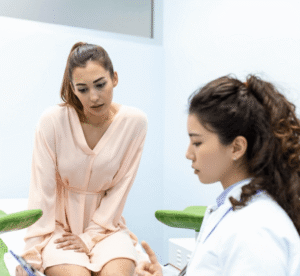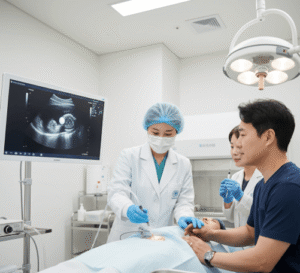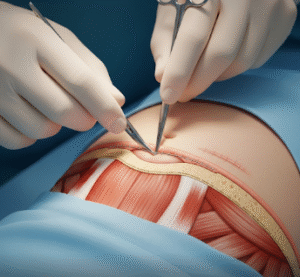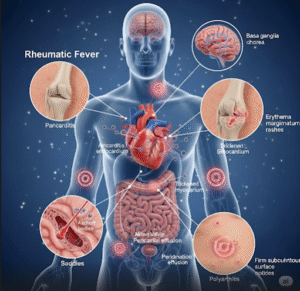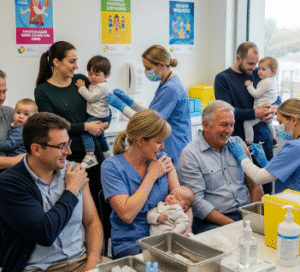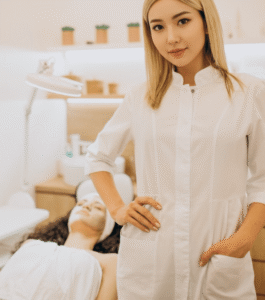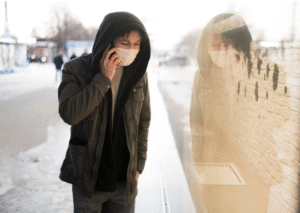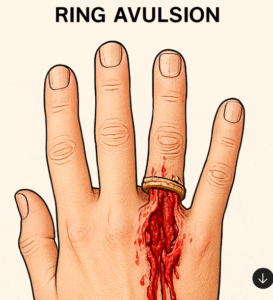What it is
➝ Earlobe keloids are firm, raised, fibrous scars that develop after ear piercing, trauma, or surgery. They are notorious for recurrence even after surgical removal.
➝ Pressure therapy is a non-invasive treatment using custom-made pressure earrings or clips that apply continuous compression to the earlobe.
➝ The sustained pressure reduces blood flow, fibroblast activity, and collagen production, which helps flatten the keloid and prevent recurrence after excision.
➝ In Korea, pressure therapy is widely used in plastic surgery, dermatology, and scar clinics, often combined with intralesional steroid injections or surgical removal.
Why it’s done
→ To reduce recurrence rates after keloid excision, which are otherwise very high (up to 70–90%).
→ To flatten existing small or moderate earlobe keloids without surgery.
→ To improve cosmetic appearance and comfort, especially since earlobe keloids can be socially distressing.
→ To provide a safe, non-invasive, long-term therapy.
→ In Korea, pressure earrings are considered a gold-standard adjunct to surgery for earlobe keloids.
Alternatives
→ Intralesional steroid injections (triamcinolone): Reduce thickness and symptoms.
→ Laser therapy (PDL, CO₂, Nd:YAG): Improve redness and thickness.
→ Cryotherapy: Shrinks bulk, often combined with steroids.
→ Surgical excision: Removes keloid but has high recurrence unless combined with pressure or radiation.
→ Radiotherapy: Used in refractory or recurrent cases, though less common for earlobes.
Preparation
→ Assess size, shape, and firmness of the earlobe keloid.
→ If surgical excision is planned, pressure earrings are prepared in advance to be worn immediately after sutures are removed.
→ Patients are counseled on the importance of long-term daily use for effectiveness.
→ In Korea, pressure devices are often custom-made by prosthetic or orthodontic labs, ensuring proper fit and sustained compression.
How it’s Done
→ Custom pressure earrings or clips are fitted to apply uniform pressure to the earlobe, usually 20–30 mmHg.
→ Earrings must be worn at least 12–16 hours daily, ideally 24 hours if tolerated.
→ Therapy duration: typically 6–12 months, sometimes longer to prevent recurrence.
→ Adjustments are made periodically to maintain adequate pressure without causing ulceration.
→ In Korean clinics, pressure earrings are often combined with monthly steroid injections or laser sessions for enhanced results.
Recovery
→ Over weeks to months, keloids become softer, flatter, and less symptomatic.
→ After surgical removal plus pressure therapy, recurrence rates drop to 10–30% compared to 70–90% with surgery alone.
→ Patients report improved cosmetic outcomes and confidence.
→ Compliance is critical; best results are achieved with consistent daily use.
Complications
→ Discomfort or pain from excessive pressure.
→ Skin breakdown or ulceration if pressure is not properly adjusted.
→ Compliance difficulties, as long-term daily wear may be inconvenient.
→ Incomplete response in very large or aggressive keloids.
Treatment Options in Korea
→ Korean scar clinics and plastic surgery hospitals routinely recommend pressure therapy after surgical excision of earlobe keloids.
→ Custom pressure earrings are available, and some clinics provide 3D-printed devices for precise fit.
→ Pressure therapy is often combined with intralesional steroid injections for better control.
→ Some advanced centers combine surgery + pressure earrings + steroid injection + laser therapy for comprehensive care.
→ Patients receive education on daily wear, cleaning, and follow-up visits to adjust pressure.
→ With Korea’s structured scar management system, pressure therapy is regarded as a cornerstone in preventing recurrence of earlobe keloids while ensuring excellent cosmetic outcomes.


